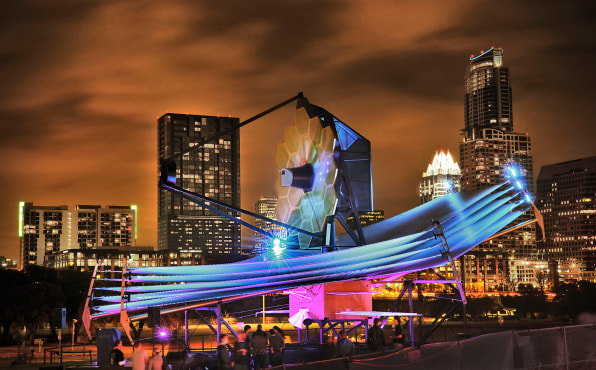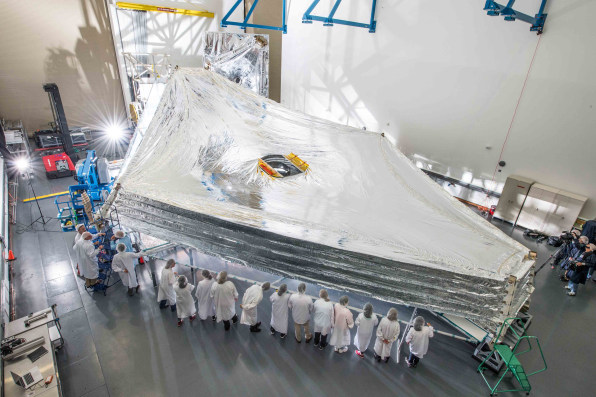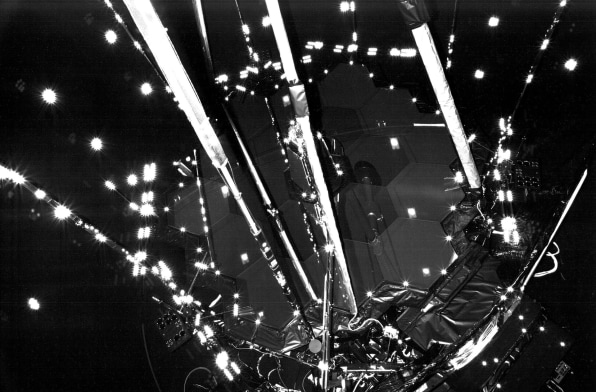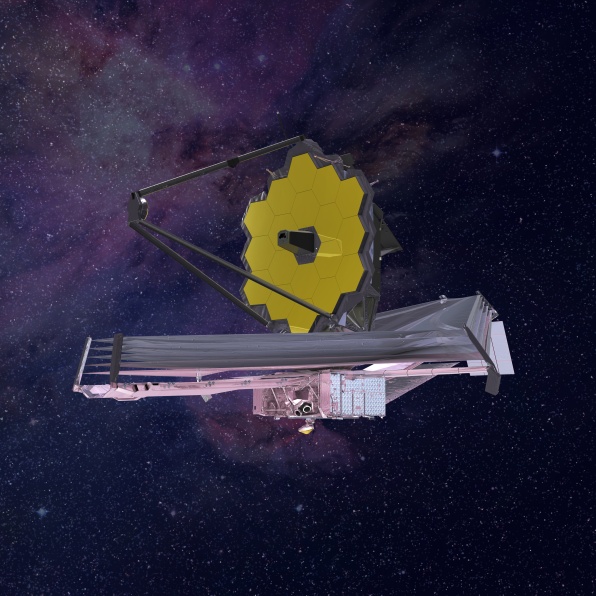2/27/2018
When the time-traveling orbital observatory known as the James Webb Space Telescope reaches its orbit around the Earth (which NASA hopes will happen sometime in mid-2019), it will radically increase how far we can peer into the past, and, scientists hope, unlock some of the greatest mysteries of our universe.
A successful launch and deployment of the telescope would represent the beginning of a new era for astronomical science. But it would also open the door for a new kind of technical innovation in space, one that promises to accelerate our capabilities and make possible things that scientists have not yet begun to dream about.
Telescope As Time Machine
The James Webb Space Telescope, or JWST as it’s known, will let us peer further back into the history of the universe than we have ever seen before, so much so that NASA has referred to it as a “a powerful time machine,” one that can see more than 13.5 billion years into the past, to a time when the first stars and galaxies the universe had ever known were just beginning to be formed.
“In reality, all telescopes are time machines,” says Dr. Alberto Conti, an astrophysicist at Northrop Grumman Corp., the company primarily responsible for implementing the design and construction of the telescope. “The nearest star is about four light years away. So when we look at this star, we see it as it was four years ago, when the light we see today originated.”

[Photo: Chris Gunn/NASA]
James Webb is built to see the universe as it was at a point “really close to when the universe first became lit with stars,” Conti says. He’s referring to the first moments after the Cosmic Dark Ages, about 380,000 years after the Big Bang (which took place about 13.8 billion years ago, for those keeping score at home). At that time, the matter that made up the universe was so dense that it was opaque: Light was unable to penetrate it, and thus unable to escape. But as the universe cooled and expanded it gradually became transparent, and light finally began to emerge.
“What we’re targeting with James Webb is the time between the universe becoming transparent and when the first stars started to light it up,” Conti says. Technically speaking, starlight did not yet exist, Conti says, but the first stars—stars very different from those we know today—were just beginning to form. The universe at that time was mostly elements like hydrogen and helium. Stars were 2-300 times larger than our sun, and lived for only a few million years before dying in enormous supernovae. “Traces of the light from these explosions is what we’re really looking at,” Conti says. “If we analyze that light, we can not only learn what they were made of, but we can also take a look at the environment in which they formed, and at conditions that gave birth to these stars.”
Reinventing The Telescope Itself
NASA hopes to launch the JWST in late spring of 2019. After a voyage of almost a month, it will enter orbit around the sun at what’s known as Lagrange Point 2, or L2, directly opposite the sun about a million miles from Earth (about four times the distance from the Earth to the moon). In fact, JWST will hold a small orbit around L2. In this position, the Earth’s shadow will block much of the heat of the sun—the optics will run at negative 388 degrees Fahrenheit—and the telescope’s huge sun shield will block radiation from both the sun and the Earth, allowing James Webb to detect the faint, long-wavelength infrared signals coming from the beginning of the universe.
That sun shield is the size of a tennis court, 70 feet long and more than 46 feet wide. And the telescope’s primary mirror is nearly 22 feet across, giving it six times more area than the Hubble Space Telescope.

“What we’re building is a deployed optic in space,” says Scott Willoughby, Northrop Grumman’s program manager for the JWST. “That in itself is a leap.” The telescope is comprised of 18 beryllium mirror segments, including two wings that will fold away so that the satellite can be loaded into the rocket’s fairing. The sunshield will be stored in an even smaller area until it deploys, a few days after launch. In all, the satellite is equipped with 178 deployment mechanisms that must all operate correctly in order for deployment to be a success.

“It’s silly for me to talk about James Webb’s legacy before we launch, but once we demonstrate that you can launch extremely large deployable structures in space with precision that allows you to make incredible observations, that opens up an entire set of parameters we’ve never looked at and a set of choices we can make,” says Conti. “It’s game-changing in that the technological revolution is the equivalent of the invention of the telescope itself. We’re not limited by physics on the ground, if you will. That is extremely exciting for future generations of astronomers, who are going to use telescopes that are truly revolutionary because of the heritage of the James Webb.”
Fundamental Questions, Open Answers
“What I’m really excited about is having a time machine that is general enough to be able to scour and observe the universe in areas we have never observed, and find things we never thought we’d know,” Conti says.
For professor James Bullock of U.C. Irvine, who serves as chair of the James Webb Space Telescope User Committee, the appeal is similar. “The kind of questions we’re going to be answering with Webb, we’ve been asking them forever,” he says.
The User Committee, which recently issued its first call for proposals, is charged with serving as a liaison between NASA and the scientific community, and advising on how to maximize the value of the science coming out of the telescope—essentially, recommending who gets to use the telescope when, and for what.

“Any great idea an astronomer has, they can propose to use this telescope,” Bullock says. “It’s likely the most interesting things that come out of James Webb are things it was never designed to do.”
It will take about six months for the telescope to be fully deployed and adjusted and ready to do science, according to NASA. The first five months of JWST’s “science operations” will then be devoted to projects that will produce460 hours of observationsthat will be made available to the public immediately. After that, most of the observations will be proprietary for a period of up to 12 months (similar to how the Hubble is operated), after which the data will be made available to any interested parties.
Having that data publicly available can be invaluable. “Right now, most of the discoveries the Hubble is making are being made not by observation but through people mining data out of 27 years of archives,” Conti says.
Exploring Inner Space
The James Webb Space Telescope should reveal much about not just the distant past and the farthest reaches of our universe, but about ourselves as well, according to those involved. “If you step way back, you might ask, What is it that humans do better than any animal on Earth? And you could argue that we think and we ask questions and we try to figure things out,” says Bullock.
“Something like James Webb is a monument to not only technological ability, but also the desire to ask deep and big questions: the origin of the universe, the existence of life beyond the solar system,” he says. “Questions like this are really profound, deep questions that people have been asking themselves as long as there have been people looking up at the night sky. As a society, we’ve decided to come together and ask the most profound questions we can. Just by asking these questions and finding out more about the universe, I think it helps us understand ourselves a bit more.”
Mark Wallacehas written for The New York Times Magazine, Wired, Salon, and many others. He lives in San Francisco.
Bagikan Berita Ini















0 Response to "NASA's Time-Traveling Space Telescope Marks A New Era For Observation And Technology"
Post a Comment